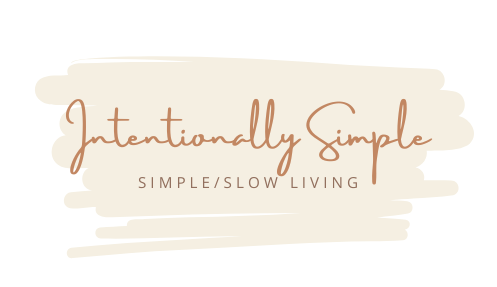Are you tired of feeling like your paycheck disappears before the month is over? Do you find yourself stuck in a cycle of consumerism, chasing trends, and accumulating things that bring little satisfaction? What if the solution isn’t in earning more but in spending less—without sacrificing joy?
Welcome to the world of slow living and money saving, where simplicity meets financial freedom. In this article, we’ll explore how adopting a slower, more intentional lifestyle can reduce your expenses, free you from financial stress, and help you live a life that truly aligns with your values.
My Journey Toward Slow Living and Financial Freedom
A few years ago, I found myself constantly chasing the next “must-have” purchase—gadgets, clothes, or home décor. I believed these things would bring happiness, but they often left me with clutter and a dwindling bank account.
Then, during a particularly overwhelming month, I stumbled upon the concept of slow living. I began questioning my habits: why was I filling my life with so much “stuff” instead of focusing on what truly mattered? By simplifying my lifestyle, I not only found peace of mind but also saved money in ways I never expected.
This shift wasn’t just about decluttering; it was about redefining how I lived and spent my resources. And now, I’m here to share actionable strategies to help you do the same.
How Slow Living Reduces Daily Expenses
Slow living emphasizes intentionality, encouraging us to focus on quality over quantity. Here’s how it translates into financial benefits:
1. Eliminating Unnecessary Purchases
Adopting slow living often begins with mindful spending. Ask yourself:
- Do I really need this?
- Does this add value to my life?
These questions naturally reduce impulse purchases, potentially saving you hundreds or thousands of dollars annually. A study published by the Journal of Consumer Research found that mindfulness in spending leads to long-term financial benefits.
2. Cooking at Home Instead of Eating Out
The slow living philosophy prioritizes healthful, home-cooked meals over expensive takeout. According to the Bureau of Labor Statistics, households spend an average of $3,000 per year on dining out. Cooking at home could cut this expense by half.
3. Choosing Durable Over Disposable
Rather than constantly replacing low-quality items, slow living encourages investing in durable, sustainable products. While these may cost more upfront, they save money in the long run by lasting longer.
Practical Methods to Save Money Through Slow Living
To start saving money today, consider these actionable strategies:
1. Embrace a Capsule Wardrobe
Slow living prioritizes simplicity, and this applies to your closet too. Opt for a capsule wardrobe with versatile, high-quality pieces that you love. Not only does this reduce the cost of fast fashion, but it also simplifies your mornings.
2. Practice Energy Efficiency
Living intentionally means reducing waste:
- Turn off lights when not in use.
- Unplug electronics.
- Invest in energy-efficient appliances.
These habits can lower your utility bills significantly. For instance, upgrading to LED light bulbs can reduce energy usage by up to 75%.
3. Focus on Free or Low-Cost Activities
Replace costly entertainment options with simple, fulfilling experiences:
- Hiking
- Reading
- Visiting local parks
These align with slow living principles and cost little to nothing.
4. Start a Budget-Friendly Garden
Growing your own herbs, vegetables, and fruits can cut grocery bills and reconnect you with nature. According to the National Gardening Association, a small investment in gardening supplies can yield a significant change in produce annually.
Reflective Prompts for Intentional Spending
Take a moment to reflect on your current spending habits. Use these journaling prompts:
- What recent purchase didn’t bring me as much joy as I expected?
- What free activities do I enjoy that align with my values?
- How can I simplify my life to reduce unnecessary expenses?
The Connection Between Slow Living and Financial Freedom
When you embrace slow living, you naturally spend less and save more. This extra savings can be redirected toward:
- Debt repayment
- Investments
- Experiences that truly matter, like travel or education
For example, studies show that living minimally can reduce annual expenses by up to 25%. Imagine what you could do with those extra funds! By aligning your spending with your priorities, you’re not just saving money—you’re gaining freedom.
Cutting Costs with a Simple Lifestyle
Here’s a quick breakdown of how slow living can trim your monthly expenses:
Expense Category | Traditional Lifestyle | Slow Living Lifestyle | Savings (%) |
| Entertainment | $150/month (movies, bars) | $50/month (parks, reading) | 67% |
| Clothing | $200/month (fast fashion) | $75/month (capsule wardrobe) | 62% |
| Utilities | $120/month (high usage) | $80/month (energy-efficient) | 33% |
| Groceries | $400/month (processed) | $250/month (home-cooked) | 37% |
Expert Opinions on Intentional Living for Financial Health
According to a study by the American Psychological Association, financial stress is a leading cause of anxiety. Experts suggest that adopting a minimalist lifestyle can alleviate this by simplifying your financial obligations and reducing decision fatigue.
Additionally, sustainable practices—like those encouraged by slow living—are proven to save money while benefiting the planet, as highlighted in a report by the World Resources Institute.
Your Path to Minimalism and Financial Freedom
Slow living isn’t just a lifestyle; it’s a mindset. By embracing intentional choices, you can simplify your life, reduce expenses, and achieve minimalism and financial freedom.
So, what’s your next step? Start small. Declutter a single drawer, prepare a home-cooked meal, or spend a weekend exploring free activities. The journey to financial freedom begins with one intentional decision.
Take action today—because your wallet, your peace of mind, and your future self will thank you.


